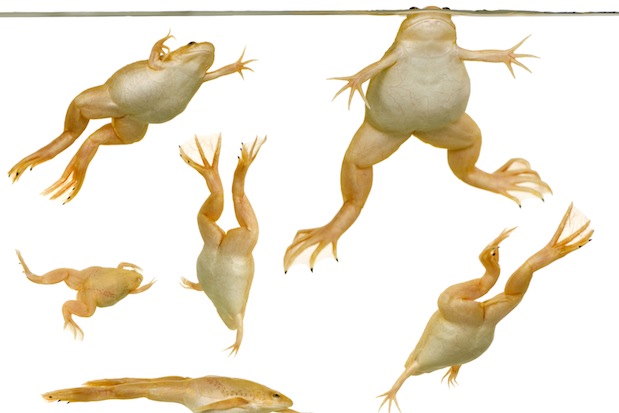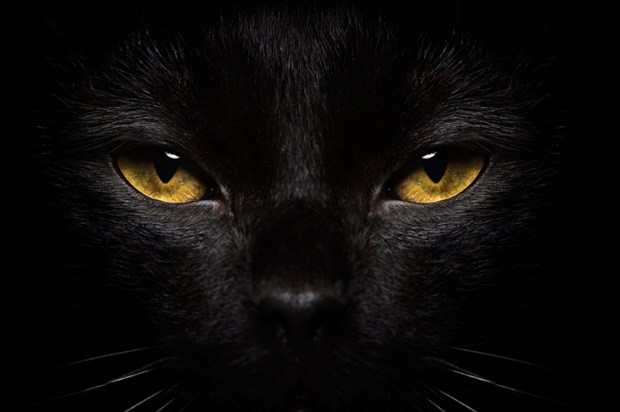When I was a child — in the days before it became illegal under Schedule 5 of the Wildlife and Countryside Act (1981) and Schedule 2 of the Conservation of Habitats and Species Regulations (2010) — I was an unlicensed handler of great crested newts.
I loved them for the same reasons, I imagine, Ken Livingstone does: the gorgeous contrast between their rough, matt black bodies and their flame-orange and black-speckled bellies; the way they float in mid-pond as if in suspended animation; watching them develop from their larval stage into efts and then adults; Beatrix Potter’s Sir Isaac Newton…
But this was back in the near vanished age when the natural world was something to be studied and enjoyed for its own sake, rather than viewed through a prism of guilt and self-hatred. In those days, you didn’t need fancy scientific qualifications or government permission to justify your interactions with the animal kingdom. It was simply the mark of a civilised, rounded human being.
So I’ve always been somewhat mystified by this caricature James Delingpole I read about in the bile-spattered comments section of the Guardian’s Environment pages, and on green activist websites and in eco trolls’ tweets. Loathsome, cigar-chomping, Big-Oil-funded arch-capitalist I may be but this is not the fons et origo of my contempt for the environmental movement. No, it’s rooted in something much deeper than that, in two things I gleaned from early childhood: first, an abiding love of nature; second, a belief that if you don’t tell the truth at all times, regardless of how unpopular it makes you, then the bogeyman under your bed will come and eat you.
Consider, in this light, the tragic case of Costa Rica’s golden toad, one of the first species, as you’re probably aware, to have gone extinct because of climate change. You’ll know this not because it’s true (not the second part anyway) but because it’s a meme which has become widely accepted fact thanks to some influential, peer-reviewed studies in Nature by one J. Alan Pounds.
Pounds’s studies sought to explain a terrifying wave of amphibian extinctions from the 1980s onwards. Given the fashionable scientific anxieties of the time, it seemed not unreasonable to blame it, as Pounds and his co-authors did, on global warming.
‘We conclude with “very high confidence” (>99%, following the Intergovernmental Panel on Climate Change, IPCC) that large-scale warming is a key factor in the disappearances,’ one of his studies declared.
There was, however, at least one major flaw in this hypothesis. Yes, frog and toad populations were dwindling — but at higher elevations with cooler temperatures, not warmer lower elevations, and in winter but not summer. If global warming were to blame, then surely the opposite would have been true?
This prompted William Laurance from the National Institute for Research in the Amazon (and his colleagues in Australia) to posit a rival theory that amphibians were under attack from a rapidly spreading, exotic disease dependent on cool, wet conditions.
In 1998 they found the culprit: not a virus, as they had first suspected, but a chytrid fungus — Batrachochytrium dendrobatidis (‘Bd’ for short) — which was virulent at lower temperatures but which was killed off at temperatures over 86°F. The carriers for the disease were African clawed frogs, imported around the world for embryological research and pregnancy testing. And the agents for its spread were either pet-shop owners (releasing infected specimens into the wild) or naturalists, researchers and tourists carrying the fungus on their boots.
Mystery solved, then. Except this is the point where it gets both interesting and sinister, as Jim Steele recounts in his book Landscapes and Cycles: An Environmentalist’s Journey to Climate Scepticism. Steele, director of San Francisco State University’s Sierra Nevada Field Campus, has drawn a similar conclusion to me: that ecology — like so many scientific fields — has sold its soul to the global warming religion.
The problem goes right to the top — from the seats of learning and the scientific academies to highly respected journals such as Science and Nature. Both of the latter have run a series of articles downplaying the role of fungus in the great amphibian die-off. ‘Species’ extinctions have already been linked to recent climate change; the golden toad is iconic,’ claimed one weaselishly phrased article in Nature as recently as 2011.
Visit the golden toad’s Wikipedia page and you’ll encounter the same obfuscations, the toad’s disappearance being ascribed not only to the fungus (true) but also to climate change and habitat loss (both almost certainly complete nonsense).
All right, fair enough: I’m guessing that few of you are quite so enthralled by amphibians as I am and that the more cynical among you (well done for persevering this far, though!) are even wondering why you should give the remotest smidgen of a toss about what it was or wasn’t that caused this beautiful orange toad to vanish from the face of the earth.
But sometimes, by focusing on a very specific, deeply obscure and apparently trivial case it’s possible to extrapolate a more general truth which has vital significance for us all. When scientists forsake the rigour and integrity of the scientific method — even if it’s in the noble cause of saving the world from the greatest threat it has ever known — they cease to be worthy of the name.
Got something to add? Join the discussion and comment below.
Get 10 issues for just $10
Subscribe to The Spectator Australia today for the next 10 magazine issues, plus full online access, for just $10.
You might disagree with half of it, but you’ll enjoy reading all of it. Try your first month for free, then just $2 a week for the remainder of your first year.














Comments
Don't miss out
Join the conversation with other Spectator Australia readers. Subscribe to leave a comment.
SUBSCRIBEAlready a subscriber? Log in